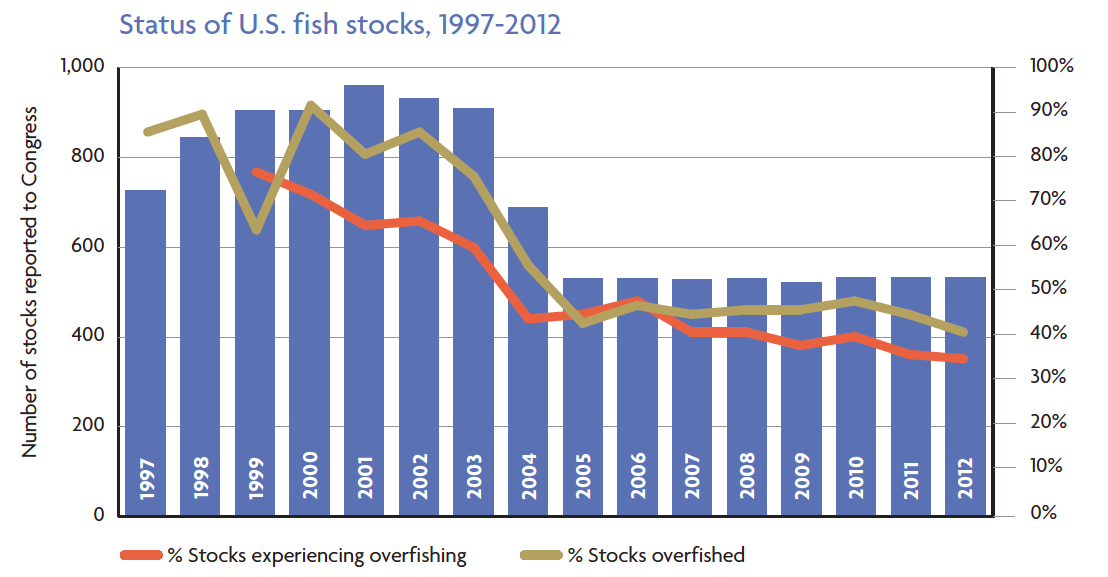Note, below are materials for a guest lecture I am giving tomorrow in Dr. Elizabeth Havice‘s Geography 435: Environmental Politics class (at UNC).
Congress is currently considering reauthorizing (and tweaking) the Magnuson-Stevens Fishery Conservation and Management Act. A National Academy of Science report found that the law has worked relatively well (e.g., in reducing the number of “overfished” stocks). So reauthorization is supported by most environmental NGOs like Pew, many scientists and fisheries agencies, and some trade and lobbying groups representing fisheries interests.
However, there are some in congress that want to weaken the law in the name of (bogusly) enabling flexibility (which already exists):
For the past half-dozen years, bills with names like the Flexibility in Rebuilding American Fisheries Act have been introduced in Congress. These bills target the MSA’s requirement that depleted fish populations be rebuilt in a time period that is “as short as possible,” not to exceed 10 years (with exceptions to account for biological differences in fish species, international agreements, or environmental factors). The bills’ sponsors claim that the 10-year time period is arbitrary and that the requirement is generally too inflexible. Neither complaint has merit.
With respect to arguments that the 10-year time period is arbitrary, it has been shown that the great majority of marine fish populations have the biological potential to be rebuilt within that period. Moreover, when rebuilding in 10 years is not biologically possible, the MSA provides an explicit exception; it also provides 2 years for plan development and implementation. Our evaluation of rebuilding indicates that the 10-year time frame has, in fact, worked well for rebuilding many stocks. As discussed earlier in the text, 19 of the 21 rebuilt stocks (91%), and 20 of the 28 stocks that are either rebuilt or showing significant rebuilding progress (71%), had time periods for rebuilding of 10 years or less in their plans. By comparison, only 8 of 15 stocks not yet showing significant rebuilding progress (53%) had rebuilding time periods of 10 years or less (this does not include Gulf of Maine haddock, which was rebuilt but subsequently designated as approaching an overfished condition).
Managers have also implemented the rebuilding requirements in a flexible fashion—sometimes to the detriment of the rebuilding process, as this evaluation shows. For many of the 44 stocks we evaluated, managers set rebuilding time periods longer than 10 years, relying on the statutory exception for when it is not biologically possible to rebuild a stock in 10 years. – Source
I testified at one of the natural resources committee hearings on reauthorizing Magnuson-Stevens in the US House last fall. You can read my opening statement here and watch the full hearing here (if you really want to) and see the full “transcript” here (ditto).
I was invited to testify for the minority (democrats) in part because of my willingness to openly call out the misinformation and shaky science of the lead witness for the majority: UW fisheries scientist Dr Ray Hilborn. Read Rays’ testimony here. His main argument is that we are “underfishing” the world’s oceans. In Ray’s view, any species not being overfished is by definition “underutilized”. Ray has been arguing we should catch and eat more fish for years. See my response to this flawed argument here.
Finally, learn about Maximum Sustainable Yield (MSY: a key concept and parameter in fisheries science and the Magnuson-Stevens debate) here.

Leave a Reply